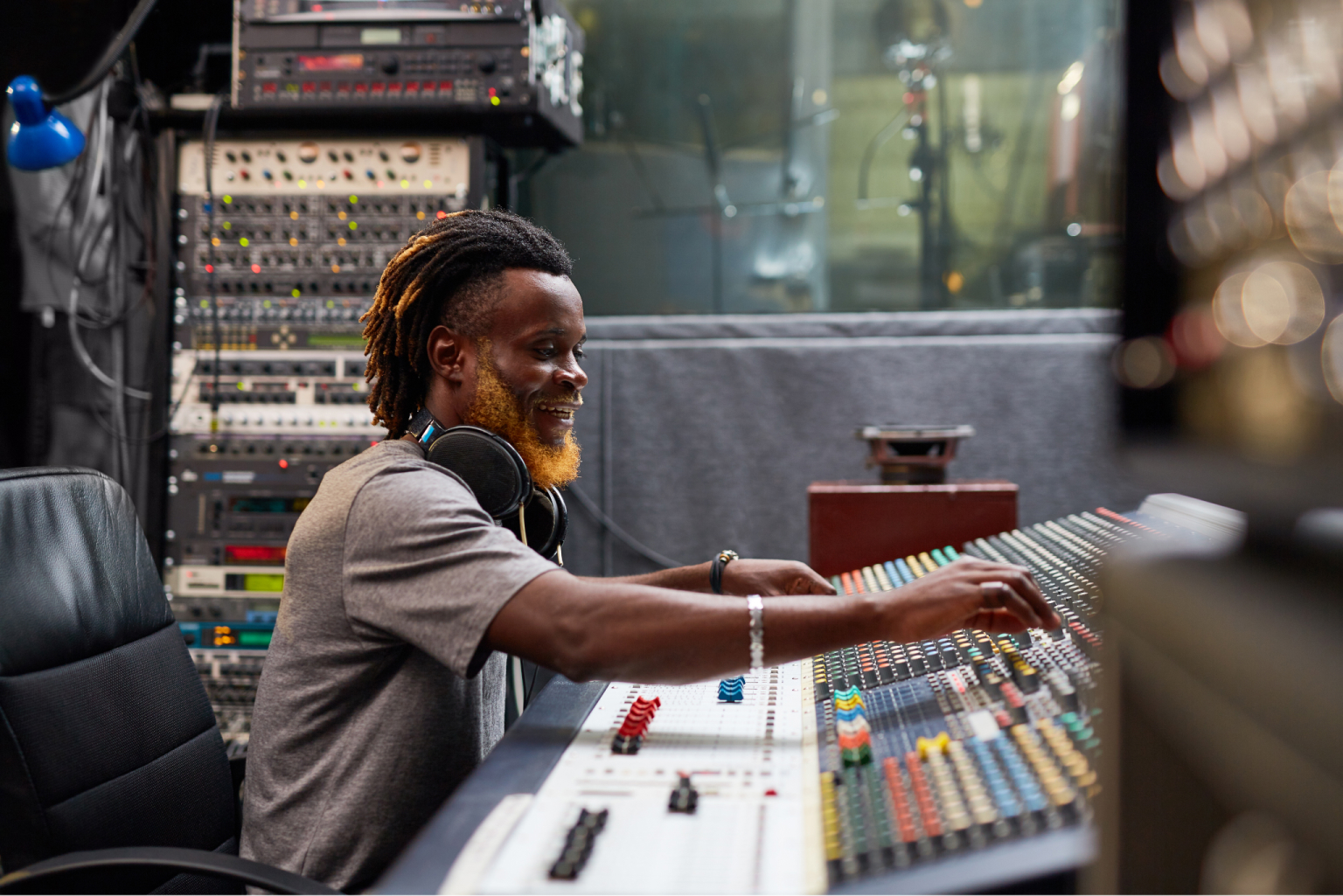How Does Spatial Audio Work?
Stockmusic.net team

Spatial audio is a relatively recent type of 3D audio technology. It’s meant to make you feel like the sound is coming from all around you, completely immersing you in what you hear.
If you’re not familiar with spacial audio, you might be curious about how spatial audio works and how to set up spatial audio. We’ll explain everything below.
What Is Spatial Audio?
Spatial audio is a lossless, 360-degree sound format. The sound comes from different points, making it feel real.
Traditionally, surround sound has been created by assigning sounds to specific speakers. For example, in movie theaters, voice audio usually came out of the center speaker, while things like special effects and background music came out of the back speakers.
So, how does spatial audio work? Spatial audio takes surround sound to a new level. Instead of needing multiple speakers, you can get the surround sound effect from just your headphones.
Two components make spatial audio work: sound engineering and your audio technology. Sound engineering refers to the way the audio on the music, TV show, video game, or movie is recorded and mixed. Technology refers to whatever you’re using to play and listen to the audio.
For spatial audio to work, you need both components. If a video game is set up with special audio but your headphones can’t handle it, you won’t get the same effect. Likewise, if the video game doesn’t have spacial audio, you aren’t going to have spacial audio, no matter how good your tech is.
How Does Spatial Audio Affect Your Audio Experience?
Spacial audio creates immersive sound. That means that the spatial audio experience is meant to feel like the music or sound is happening all around you. It’s also meant to make you feel like you’re actually there, whether that’s inside a video game you’re playing or a movie that you’re watching.
As a result, video games, movies, and TV shows are some of the best things to listen to with spacial audio. Music, on the other hand, isn’t typically made to be spacial audio content. As a result, the results can vary between songs.
What Are the Types of Spatial Audio Technology?
There are two forms of spatial audio: binaural audio and object-based sound. Binaural audio is the type used in headphones, while object-based sound is for listening through speakers.
Binaural Audio
Binaural audio is a type of surround sound that uses two audio channels. The idea is to create realistic 3D audio by recording it in a way that’s similar to how someone would hear it.
This is done by creating a recording environment that imitates the human experience. A pair of microphones are spaced about head-width apart to reproduce the way human ears capture and process sound.
One way to achieve this is with dummy head microphones, which is just what it sounds like: a rubber dummy head has microphones in its ears to capture the sound the way a human’s ears would.
Binaural audio really only works through headphones. The effect is lost through standard speakers. Headphones separate the audio that each ear hears, helping to mimic a real-world experience.
Object-Based Sound
Object-based audio is audio mixed in a way that creates an immersive experience for television, film, and loudspeakers.
In the past, audio was all mixed on a single channel, no matter how many speakers were being used. More recently, to create surround sound, multiple audio channels were used to provide different audio to different speakers.
To enhance the surround sound experience, engineers needed to change their approach. This new method of object-based sound attaches metadata, or a simple description, to each sound. This data can be consistently updated, allowing the objects to “move” around a room or audio system. A sound effect that in one frame sounds like it’s behind you could, in the next frame, sound like it’s right next to you.
Object-based sound creates a realistic experience because it allows sounds to move around you just like they do in real life.

What Devices Are Compatible With Spatial Audio?
Many devices are compatible with spatial audio technology such as Dolby Atmos or Apple Spatial Audio. Some common compatible devices include:
- Amazon Fire HD 8 and 10 tablets
- Android smartphones with Android version 9 and above
- Android TV version 9 and above
- Apple AirPlay
- Apple iPhones and iPads with iOS version 13.4 and above
- Apple TV with tvOS 13.4 and above
- Chromecast devices with Google TV
- Google TV
Other types of TVs may support immersive audio, but it depends on the TV. Some computers may also support spatial sound.
If you’re using a device, such as a smartphone, that supports spatial audio, you don’t need to worry too much about compatible headphones. Most should work just fine when you turn on spatial audio.
Many sound bars and speakers also support spatial audio.
Comparing Dolby Atmos With Apple Spatial Audio
There are two primary types of spatial audio technology: Dolby Atmos Spatial Audio and Apple Spatial Audio.
Dolby Atmos is essentially the gold standard in spatial audio. Many video games, Blu-ray discs, and streaming services have mixed their audio for Dolby Atmos.
Apple Music’s Spatial Audio is a separate, head-tracked spatial audio technology for Apple products, but it was designed to work with Dolby Atmos. It works through head tracking; sensors inside the AirPods monitor your head movement and adjust the audio so it always sounds like the audio is coming out of the device you’re using.
You’ll need certain models of AirPods or the Beats Fit Pro to make this work, and you’ll need to be listening to your audiovisual content from an Apple device that supports Spatial Audio.
How To Get Started on Your Immersive Listening Experience
Now that you understand the meaning of spatial audio and how it works, you can set up your own immersive listening experience. StockMusic.net has a wide variety of quality, royalty-free music available for you to use in your latest project. Check out our library today!